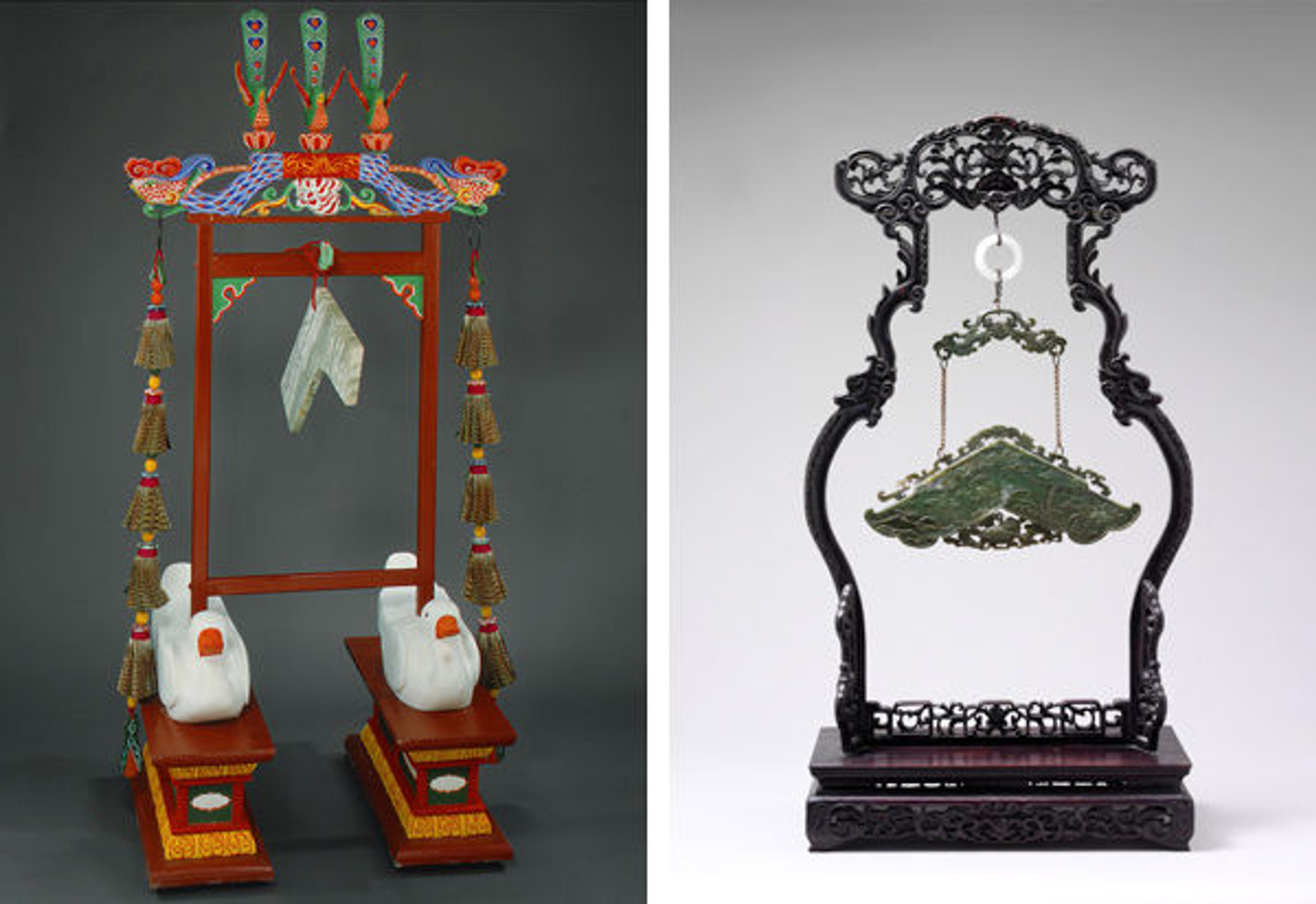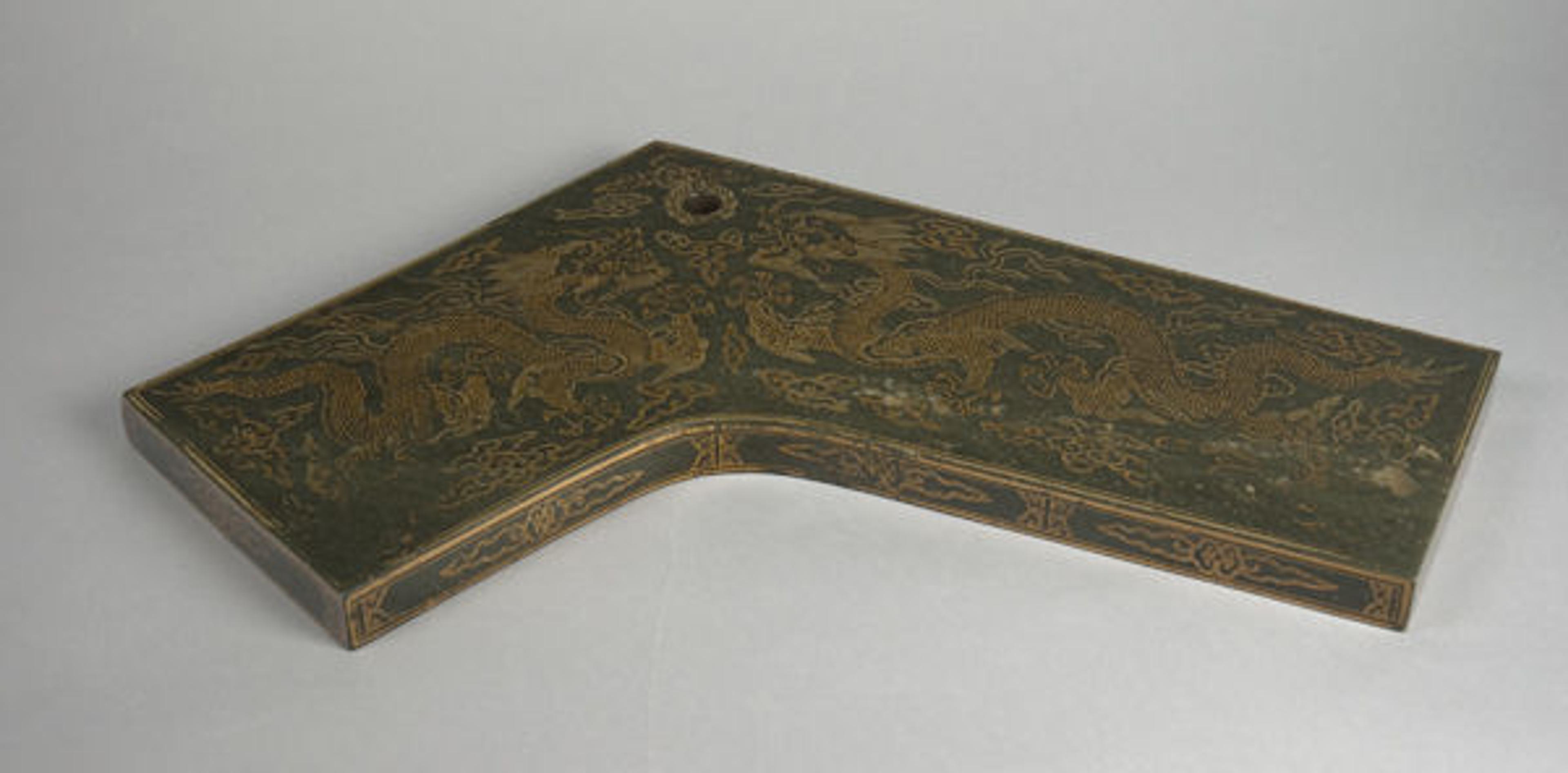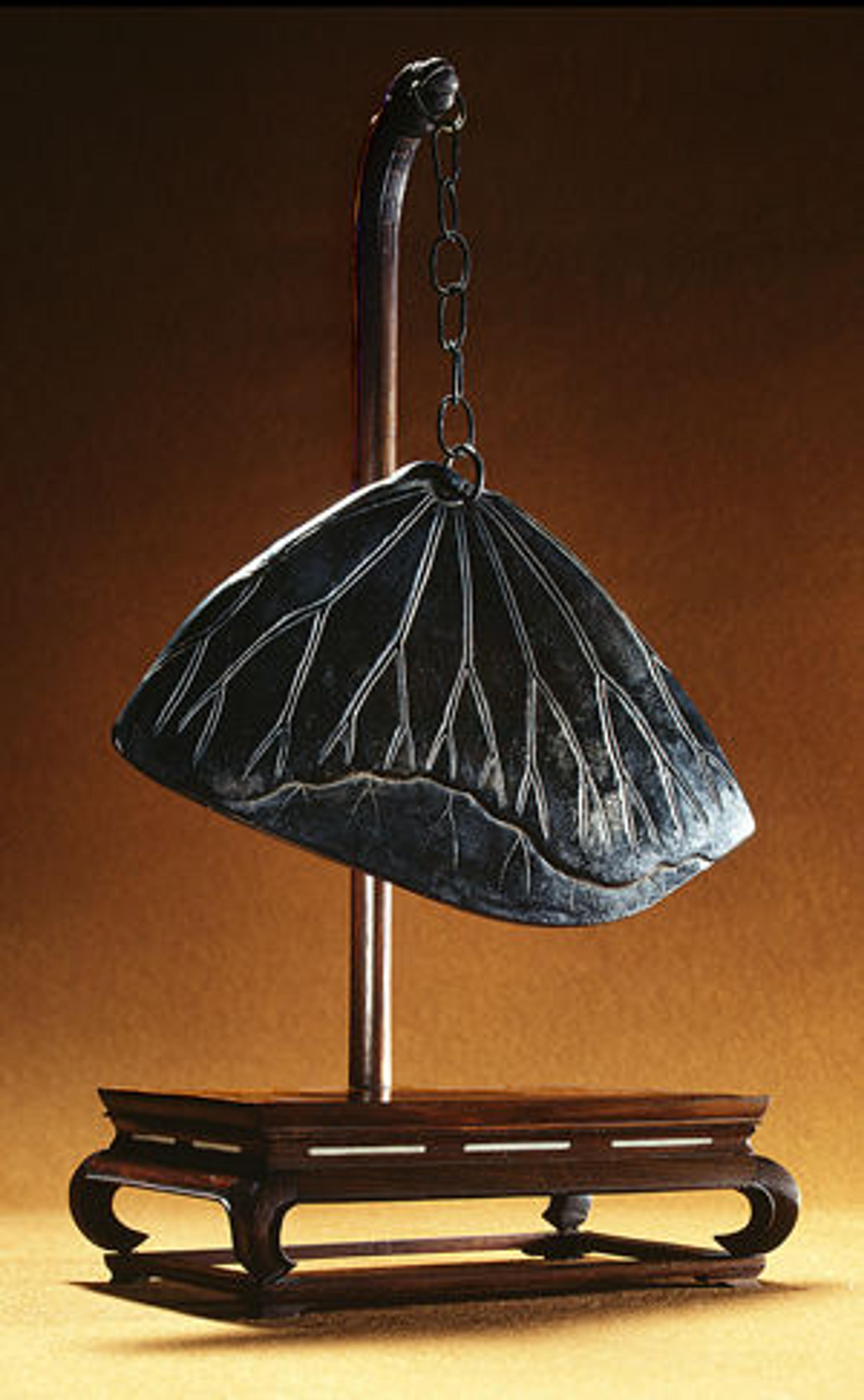The Many Sounds of Stone

Left: T'ukkyong, ca. 1981. Korea. Wood, marble, feather, beads, horn. The Metropolitan Museum of Art, New York, Gift of Korean Cultural Service, 1982 (1982.171.3a-c). Right: Teqing, late 19th century. China. Jade. The Metropolitan Museum of Art, New York, The Crosby Brown Collection of Musical Instruments, 1889 (89.4.1795)
«Stone is far from the first thing that springs to mind as one considers the materials needed for a musical instrument to make a pleasing sound, yet in many parts of the world this rigid element is often included in instrument making. On May 29, Glenn Kotche and Third Coast Percussion will perform a new composition inspired by one such instrument in the Museum's collection: the William Till rock harmonicon, made around 1880.» Similar to a xylophone in terms of construction and performance practice, this instrument, composed of twenty-two stone slabs of varying lengths and thicknesses, produces a clear ringing scale from A#4 (468.8 Hz) to A#7 (3741.8 Hz), and its "rock music" made quite a sensation across Europe and North America during the Victorian era.

Chime (Qing) for Linzhong (8th note in the 12-note scale), dated 1716. China, Qing dynasty (1644–1911), Kangxi period (1662–1722). Jade with incised gilded design. The Metropolitan Museum of Art, New York, Gift of Major Louis Livingston Seaman, 1903 (03.15.1)
Classified by Western scholars as lithophones, sonorous stone instruments are found in various forms throughout the globe. In fact, stone is actually one of the eight materials traditionally used in China to classify their indigenous instruments. Stone has been used for music making since prehistoric times, and archaeologists believe instruments found at prehistoric sites in India may be evidence of its earliest use.
Left: Goqing, 19th century. Amoy Province, China. Wood, metal, stone. The Metropolitan Museum of Art, New York, The Crosby Brown Collection of Musical Instruments, 1889 (89.4.64)

Stones are either sounded in their natural setting or removed, tuned, and reshaped into sets of rectangular bars, discs, or, as in East Asia, L-shaped chimes. These carved and chipped stones are then supported on large leaves on the ground or, more commonly, suspended from or laid out on frames and struck with padded or wooden mallets. Some are fashioned into symbolic forms and displayed as decorative items while others are used in ritual or for communication and entertainment to accompany song or dance. In the Caroline Islands, Micronesia, they emphasize rhythmic work carried out on top of a sounding table-like stone slab. Stalactites and stalagmites found in caves are also used to produce musical tones for throngs of tourists, and in various locations in India sonorous stone pillars turn buildings into large-scale instruments.
All around the world, these durable instruments give new meaning to the phrase "rock on!"
Related Links
Met Museum Presents Blog: The Original Rock Band
Wild Sound: Glenn Kotche and Third Coast Percussion, Friday, May 29, at 7:00 p.m.
Ken Moore
Ken Moore is a curator emeritus in the Department of Musical Instruments.